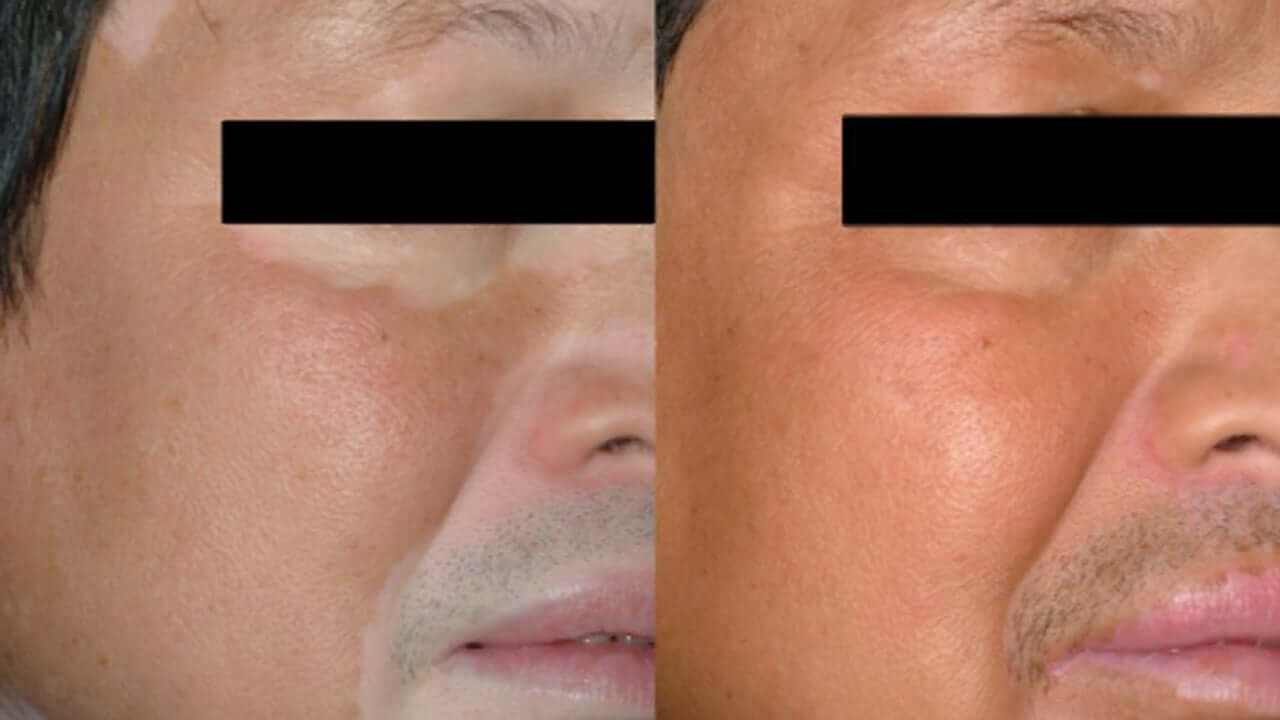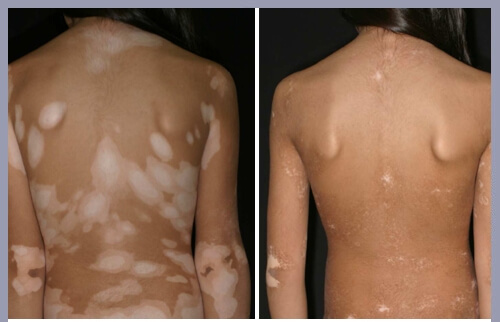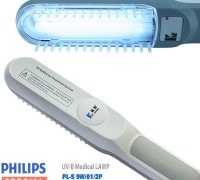Vitiligo is a disease of unknown origin, which manifests from melanin insufficiency (the pigment responsible for skin color) on certain areas. Damaged zones are not inflamed or itchy. This condition doesn’t cause physical pain, but it brings a lot of discomfort. As a result, patients get stressed and depressed (which can aggravate the disease even more), and develop psychological issues.
What does it look like?

Vitiligo and UVB therapy
UV-therapy has been used as a form of skin diseases treatment for years. The first attempts to use phototherapy as a treatment for dermatological diseases were made in 1800. In 1927, the first positive results of psoriasis light therapy were documented. In 1978, phototherapy was officially recognized as one of the psoriasis and eczema treatment methods. The use of UVB light treatment for vitiligo happened almost 20 years later.
Ultraviolet can vary
In 1990, an experimental study of broadband UV radiation showed positive results: 57% of patients received a stable effect of repigmentation of vitiligo spots. 80% of patients achieved repigmentation in 80% to 100 % of their spots after 70 treatments sessions. However, there are some side effects to this treatment. The therapy course requires special care, as well as constant monitoring by a doctor.

Another group of scientists studied the effect of the narrowband spectrum (311-313 nm) on vitiligo. The obtained data indicates that UVB vitiligo treatment is more effective than photochemotherapy PUVA. The narrowband spectrum gives excellent results without any risks for the patient while avoiding possible side effects. This method of treatment has many undeniable advantages.
Advantages of UVB vitiligo treatment:
- The treatment will show positive results even if other methods don’t help.
- It is a safe method of treatment for the elderly, sick, pregnant, and women who are breastfeeding, as well as children and patients who suffer from kidney insufficiency or liver failures.
- It provides stable remission.
- Doesn’t have side effects (unlike the broadband spectrum) if used correctly.
Results
UVB light treatment for vitiligo has proven its effectiveness. While you are reading these texts and trying to figure out whether or not it’s worse giving it a chance, somebody already benefits from the results – they have a happy and free life without the discomfort that vitiligo causes to the skin. According to studies, to achieve the best effect you should perform the procedure at least 3 times a week (but not more than 24 hours from the last session) for 12 weeks.
Attention! Do not prescribe yourself vitiligo UVB treatment. The number of procedures, exposure amount, duration of treatment, and the use of a supporting therapy should be based only on doctor`s recommendations.

The dose of radiation determined by the doctor is based on the prototype (skin color), the size of the affected area, and its location on the body (for example, spots on the hands, face, and neck respond to vitiligo UVB treatment faster than spots on the soles of the feet), using photosensitizing drugs and other conditions.
Important

The first step in UVB vitiligo treatment is to make an appointment with a doctor.
Use glasses to protect your eyes.

Prior the procedure, thoroughly clean the skin from make-up, cosmetics, sweat, etc. The skin has to be absolutely clean.

You have to be constantly seen by the doctor during the treatment course. Burning, tightness or other sensations in the treated area can be a sign of the changing radiation dosage or some other modifications.
Home UVB treatment lamps. Choosing the correct model
UVB vitiligo treatment compact lamps are safe and convenient for using at home. The most important thing in the treatment is to follow the doctor recommendations.






Comments